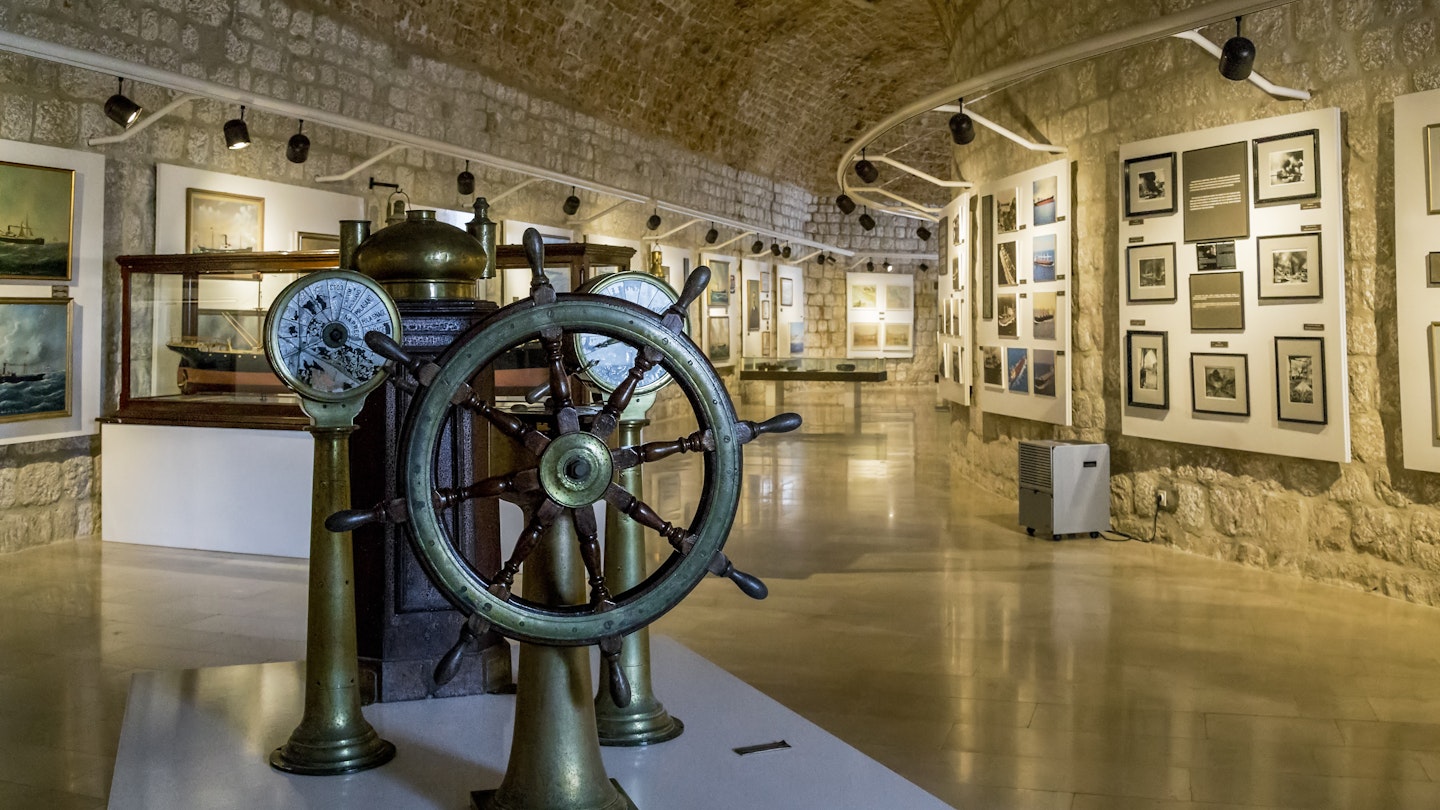Discover the Best Museums in Dubrovnik
Dubrovnik’s greatest museum is arguably the city itself – a living, breathing, labyrinthine slab of more than a thousand years of history, enclosed within some of the most stunningly well-preserved medieval fortifications anywhere on the Mediterranean. Moreover, Dubrovnik also hosts several excellent museums, which are worth visiting in their own right – ranging from modern and contemporary art to socialism, and from folk costumes to photojournalism.
Entry to several of the city’s main museums – including the Cultural History Museum in the Rector’s Palace, the Museum of Modern Art Dubrovnik, the Maritime Museum, and the Ethnographic Museum – is included on the Dubrovnik Museums ticket. Alternatively, free entry to these museums, along with the unmissable city walls and use of local public transport, is included with a Dubrovnik Card.

Cultural History Museum: Best for Local History
Dubrovnik’s Cultural History Museum is housed in the Rector’s Palace – a stunning Gothic-Renaissance building in the heart of the old town, which dates back to the 15th century and was once the center of government and the official residence of the Rector of the Republic of Dubrovnik. The collection contains over 20,000 objects that cover the full spectrum of the city’s history and culture – including paintings, printmaking, textiles, ceramics, glass, metalwork, furniture, icons, coins, and weapons, spanning the period from the 1300s to the early 20th century.
Museum of Modern Art Dubrovnik (MOMAD): Best for Modern Art
Housed in a beautiful mansion built for the wealthy Banac family, Dubrovnik’s Museum of Modern Art is the city’s most prestigious collection of modern and contemporary art. Arranged over four floors, the museum’s permanent collection covers painting, sculpture, and prints from the end of the 19th century to WWII – including one of Croatia’s most famous artists, Vlaho Buhovac, along with more recent works including photography and video. The style of the building complements the nearby Gothic and Renaissance architecture in the old town.

The Maritime Museum: Best for Maritime History
This museum is the place to uncover Dubrovnik’s remarkable seafaring history (in which it closely rivaled Venice) from Antiquity right through to the present day – featuring navigational instruments, historic maps and charts, intricately detailed model ships, and finds recovered from shipwrecks. Founded in 1949, the Maritime Museum’s initial collection originated from donations from local residents, along with objects from an exhibition on Dubrovnik’s seafaring history in the 1940s. Over the years, the collection has expanded to include over 11,000 objects and is located within the medieval St John’s Fort, which guards the entrance to the city’s harbor.
Red History Museum: Best for Modern Croatian History
One of Dubrovnik’s newest and most intriguing museums, the Red History Museum offers an honest look at Croatia’s recent past. It examines its time under Communism while part of the former Yugoslavia – a period often overlooked and, consequently, poorly understood by many visitors beyond common stereotypes.
The museum is divided into three sections, discussing the beginnings of Communism, daily life in the former Yugoslavia (including modern apartments, rock ‘n’ roll, and the secret police), and personal memories from residents across Croatia who lived through Socialist rule. Fun, informative, and interactive – this museum reflects how modern museums should engage their audiences.
War Photo Limited: Best for Photography
Established by photographer Wade Goddard, War Photo Limited is an extraordinary collection of photographs that provides an unflinching look at the human cost of war. In addition to its permanent exhibition featuring images from the breakup of the former Yugoslavia, the museum showcases temporary exhibitions from other conflict zones, including Syria, Lebanon, and Ukraine. Furthermore, a collection of signed, limited edition prints is available for sale.
At turns harrowing, haunting, and heartbreaking, these images stand as a testament to the bitter folly of war and the work of some of the greatest photojournalists of the modern era. Essential viewing for anyone interested in the impact of conflict.

Ethnographic Museum: Best for Folk Costumes
Occupying a former 16th-century grain store, the Ethnographic Museum in Dubrovnik showcases a splendid collection of folk costumes from the city and the surrounding region, including Konavle and the Elafiti Islands, as well as costumes from neighboring countries. These dazzlingly colorful and ornate costumes also feature traditional jewelry and examples of Croatia’s rich lace-making tradition, some of which is inscribed on the UNESCO list of Intangible Cultural Heritage.
Love Stories Museum: Best for Romantics
Dubrovnik’s Love Stories Museum shares love stories from around the globe – from local folklore to personal anecdotes captured through objects donated to the museum. This collection also highlights romances from films and TV series filmed in Dubrovnik, including the well-known Game of Thrones, along with the stories behind famous love songs.
This museum serves as a heartwarming counterpoint to the Museum of Broken Relationships in Zagreb – instead of objects symbolizing painful breakups, you will find stories and items that evoke warmth and affection.




